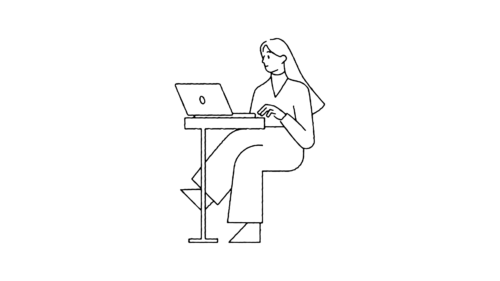Craft Communications That Resonate by Striking the Right Emotional Note

First, a question: What made you click on this article? In that split second when you decided whether to give this a read, your brain made a series of subconscious decisions that you didn’t think about as much as feel.
We have these emotional responses continuously, and they’re pivotal for opening and inspiring empathetic, engaging conversations. It’s a consideration that can be easy to overlook when communicating about public policy, which is often technical and complex. But when that happens, audiences tend to see policy communications as detached or impersonal, even when an issue directly affects them.
If your policy messaging isn’t making the desired impact, emotion could be the missing piece. Custom illustration is a great way to help your message resonate with the people you want to reach.
Illustrations Offer Immense Flexibility
Illustrations are a powerful building block for a unique and cohesive brand identity. They are helpful for visualizing abstract concepts or sensitive issues—areas that photography, especially stock photography that isn’t customized to your needs, can have difficulty capturing.
More importantly, illustrations are innately much more flexible than real-world photography, as illustrators have complete control over the width of every stroke and the brightness of every pixel.
This flexibility gives us the ability to build and style around an emotional point, resulting in visuals that help viewers easily understand and connect emotionally to a message, even if they don’t read any of the words.
Let’s Build a Composition Using Emotion
When you set out to create a custom illustration, how do you start? The best way to create an emotionally impactful piece of work is to start with the emotion.
Get out a pen and paper, and think about the emotion you want to capture. As with other design elements, illustrations don’t have to be needlessly detailed to be effective at eliciting emotion.
Let’s use an example—suppose we need to create an illustration of a woman using a laptop. Here is what would happen if we just rushed into it.

So far, we’ve focused on concrete details to envision the scene of “woman and a laptop.” Let’s stop and think about the emotional goal of the illustration. What do you want the audience to feel or understand when they look at it?
If the goal is to inspire and encourage onlookers to try the same product, the illustration should feel similarly empowering and uplifting. The composition could frame the woman at below the eye level to make her look powerful or at the eye level to make her look approachable.


We could use bright colors and dynamic shapes to convey joy, or center her for balance and calmness. The style itself could also reflect these emotions: Bold, expressive lines and thin, perfectly straight strokes evoke different feelings.


You can see how using an emotional point of reference helps us create a much more engaging and impactful piece of collateral. The illustration is simple, but with all the work we did to build this scene around an emotional point, this basic composition now communicates a nuance that’s difficult to express in words.
The illustration is merely a tool; the ideas within are what’s important. So instead of asking the question, “How do these images look?”, perhaps we should be asking, “How do these things feel?”

